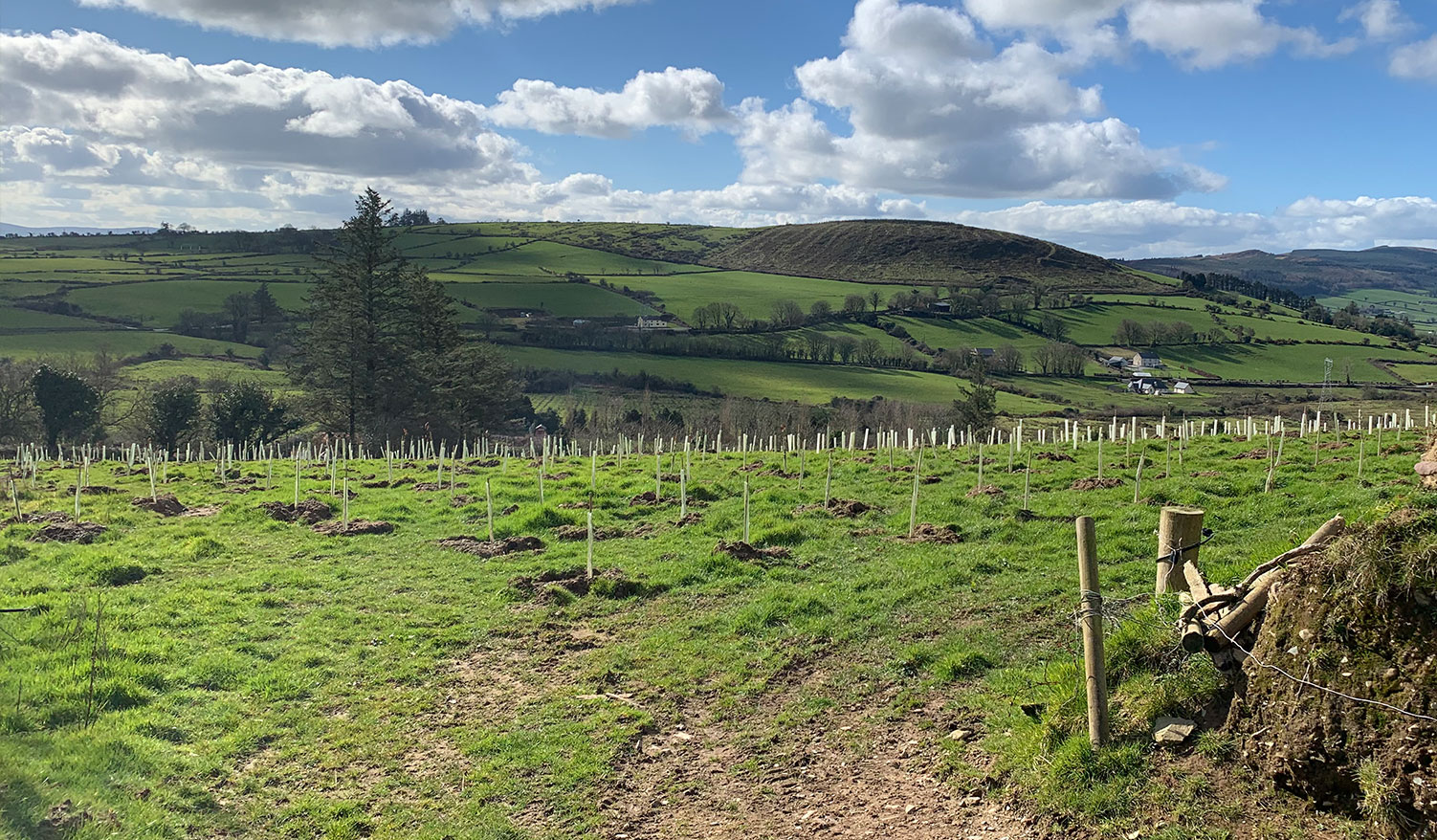Our Thoughts
A sustainable solution – planting native Irish trees to create homegrown carbon offsets

Less than 12% of Ireland is currently covered in trees – far below the EU average of 38%. The Government has set an ambitious annual afforestation target of 8,000 hectares with the intention to reach 18% tree cover nationally by 2050.
This ambition is commercial to some extent but also part of a broader climate change strategy to bolster forest cover nationwide, foster biodiversity, and enhance air and water quality whilst also sequestering carbon dioxide.
Benefits of Tree Planting
Afforestation has a significant role to play in supporting the timber industry in Ireland, both in terms of retaining what is a specialist skillset and supporting the creation of new jobs. In addition to the economic benefits, trees and forests also deliver many social benefits, enhancing quality of life, health and wellbeing and fostering social cohesion. However, trees also deliver significant environmental benefits. Indeed, forests and tree plantations serve as vital habitats for diverse animal and plant species, contribute to the water cycle, stabilise soil, and mitigate erosion. The process of carbon sequestration, where trees absorb carbon dioxide (CO2) from the atmosphere is, however, one of the most significant environmental benefits of tree planting.
Over their lifetime, a hectare of land planted with trees can sequester anywhere from 200-500 tonnes of carbon, generating millions of tonnes of carbon sequestration if national targets are met.
Recognising the pivotal role that carbon sequestration plays in climate change mitigation and needing to use offsets in some instances to achieve our net zero targets, IPUT has taken the lead in the Irish real estate industry by planting native trees in Ireland today to create locally grown carbon offsets for future use.
The Role of Carbon Offsets
Carbon offsets serve as a means to counterbalance CO2 emissions by supporting equivalent CO2-saving projects elsewhere. Our objective as a development company is to prevent a net increase in atmospheric CO2 due to our activities, utilising offsets as a final recourse when emission reductions alone are insufficient. We uphold principles of additionality, measurability, and transparency in our offsetting approach. While short-term solutions involve acquiring carbon credits from voluntary markets overseas, our long-term ambition at IPUT is to develop and utilise our own local solutions, particularly through tree planting initiatives.
Our Initiatives
In 2022, we partnered with a retiring farmer in County Cork to support afforestation efforts, laying the groundwork for the creation of local carbon offsets. Building on this, we acquired 125 acres of land in County Mayo in 2023, enabling the planting of over 116,000 native Irish trees capable of sequestering up to 12,500 tonnes of carbon. Funding for this acquisition was sourced from our internal transition fund. Our next step was to apply for afforestation licenses with the support of SWS Forestry. With the first license recently approved, planting is now well underway on site in Mayo with 30,000 trees already planted. Our aim is to utilise these locally created carbon offsets to meet residual operational carbon emissions in our portfolio from 2030 onwards.
Based on our estimations, the tree planting in Cork and Mayo will offset our residual emissions from 2030-2040 as a minimum, with further emissions reductions helping these offsets go further.

Next Steps
Verification of carbon sequestration from the native Irish trees we plant is the next step for us. While we’ve been using the UK’s Woodland Carbon Code for calculations, we anticipate the establishment of an Irish equivalent to support local offsetting schemes in due course.
As national efforts to reduce greenhouse gases and increase afforestation intensify, we anticipate more local carbon offsetting projects emerging in the coming years. In the short term, we can expect to see more industry stakeholders investing in tree planting.



